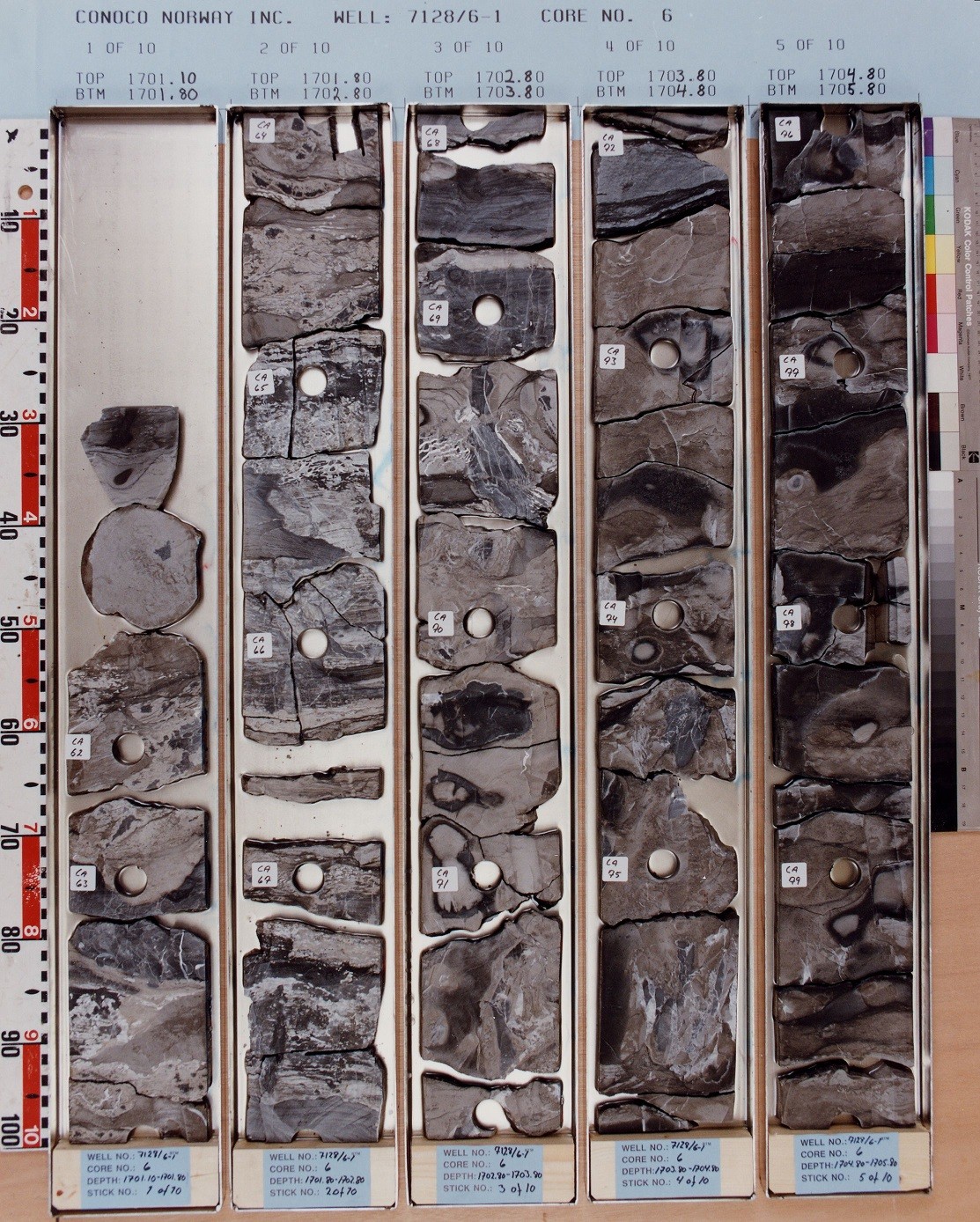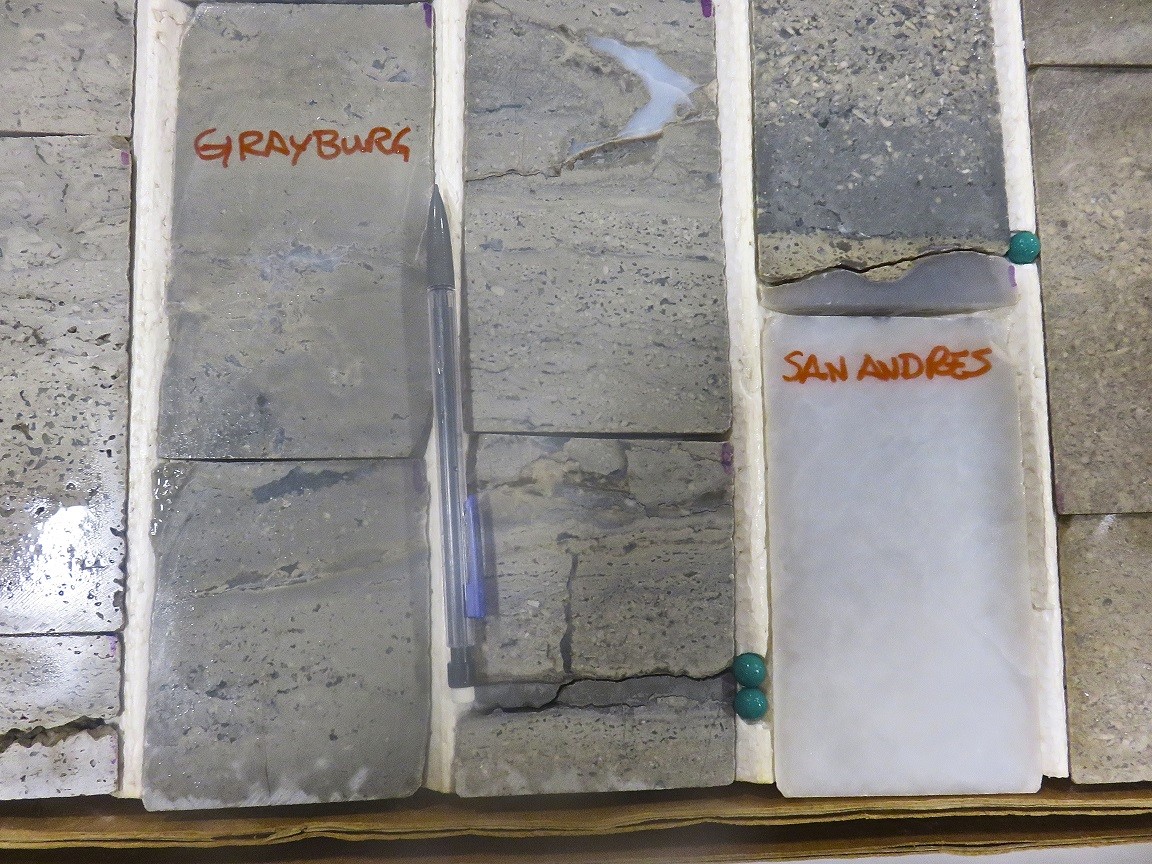Describing and Interpreting Carbonate Core
So you spent the past fifteen years describing siliciclastic core and now your company has decided to drill their first carbonate well. You are excited at the thought of finally looking at some rock (the reason you became a geoscientist in the first place). You spent the evening polishing up on your sedimentary structure and trace fossil identification skills. Now you feel ready and as soon as you open the lid to your first core box, you’re like “holy shit”- there are no sedimentary structures or trace fossils, no visible grains to use your fancy hand lens on, just a kaleidoscope of colors and textures.
Seemingly complex core can be tackled by looking at microfacies in thin-section
So what do you do now? You’re a geoscientist and your boss sent you to the core lab to bring back valuable data. You can’t possibly go back and tell him you couldn’t do jack-squat (you put “core description” as one of the skills on your CV).
Well, this is where you have a secret weapon: the wonderful world of carbonate microfacies. The bulk of facies description and interpretation for carbonates is done using thin-section. But this post is not about carbonate petrology. So let’s talk about what you should be looking at when describing core:
1. Almost all platform interior carbonates show some level (and often multiple levels) of cyclicity. Look for patterns. Not all cycles in carbonates “shoal upwards” therefore be creative and think symmetric and asymmetric cycles and hemicycles.
2. When you do see grains, measure their size and proportions. If you can’t differentiate brachiopods from pelecypods, that’s ok, at least get the general percentage of skeletal grains vs non-skeletal grains. Look for trends within beds.
3. Mark all contacts – are they gradational or sharp? regular or irregular? is there a color change at the contact? is the contact lined with minerals or a certain grain type?
4. Learn to describe natural vs drilling-induced fractures.
5. Learn to describe and interpret bioturbation index, diversity and ichnofacies
6. Remember almost all carbonate rocks are a mix of grains, matrix and cement. Learn to identify and interpret these. You may need to take courses in carbonate sedimentology, stratigraphy and diagenesis.
7. Never pour acid directly on the slabbed face, use the back of the core if you really need to do this.
Mixed carbonate-evaporite and carbonate-siliciclastic successions add another level of complexity
8. Bring your GR logs with various combinations to the core lab (U-Th/U-K/K-Th) and don’t forget your borehole image logs. You’d be amazed how GR and borehole image logs can sometimes pick up details that your eyes can’t.
9. Keep an open mind, most “shale plays” these days are actually carbonates, so don’t go in with preconceived notions of paleo-water depth and environment.
10. Take only thin section plugs when facies change, and those too from the back of the core – don’t leave the core looking like Swiss Cheese after your visit.
Hope this helps you out! Take some pictures and post them on linked-in!






Post a comment
You must be logged in to post a comment.